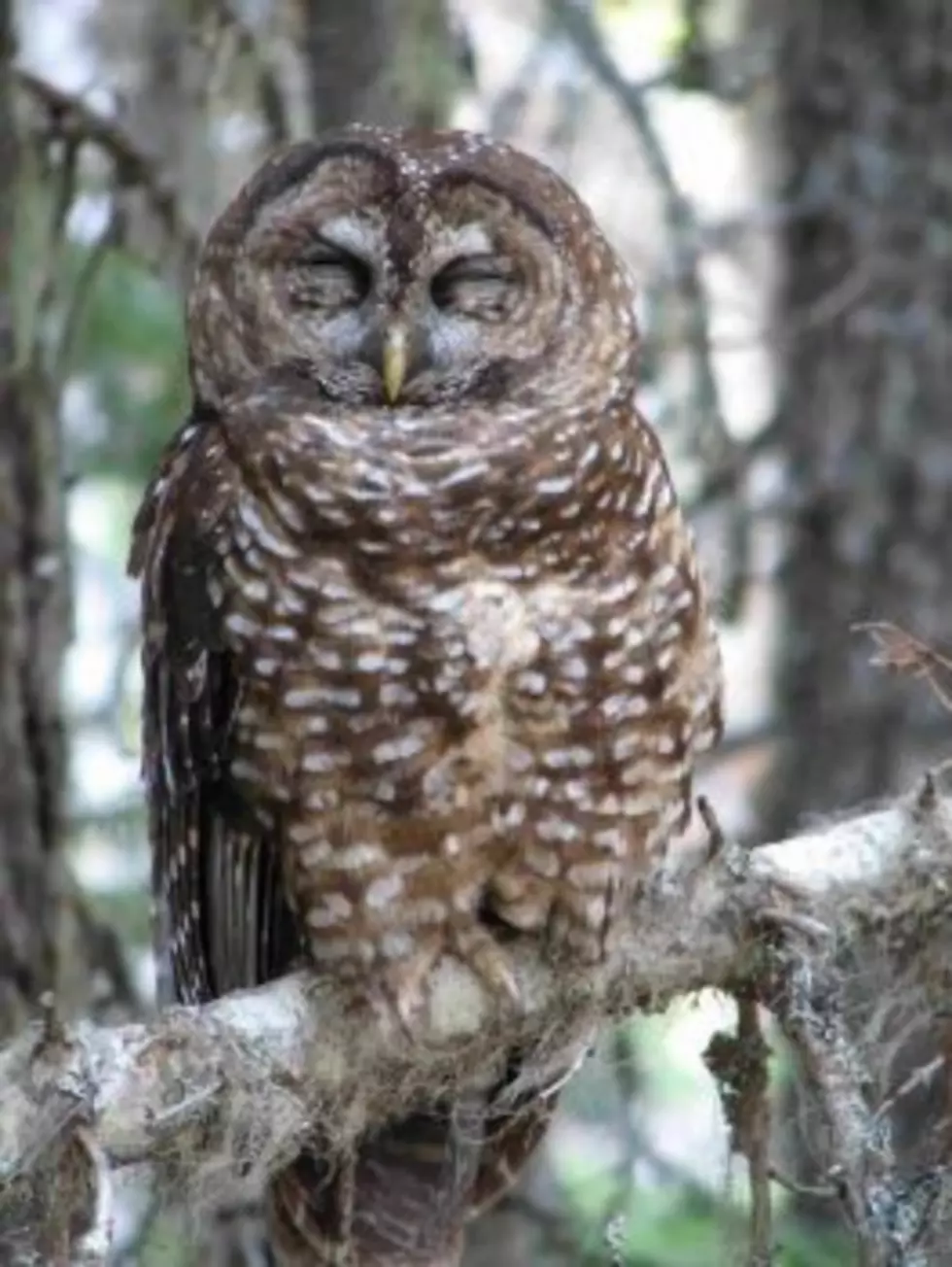
Feds sued over inaction on threatened northern spotted owl protections
SAN FRANCISCO (CN) — In the latest legal tussle over much-litigated protections for the northern spotted owl, environmental groups sued the U.S. Fish and Wildlife Service Tuesday for missing mandatory deadlines to review the bird’s protected status as its population decline accelerates.
Nesting on the branches of some of the oldest trees in the Pacific Northwest, the chocolate-brown, dark-eyed bird was listed as a threatened species in 1990, but several factors — including logging, climate change, wildfires and encroachment by the invasive barred owl — has caused the nocturnal creatures’ numbers to decline at an increasing pace over the last three decades.
With those concerns in mind, the Environmental Protection Information Center (EPIC) and six other groups petitioned the federal agency in August 2012 to upgrade the owl’s designation from threatened to endangered.
In April 2015, nearly three years after a 90-day deadline for responding to the petition, Fish and Wildlife found substantial evidence supported the requested status change. That set off a mandatory one-year review, which, more than five years later, remains unfinished.
The agency is also tasked with reviewing the status of each threatened and endangered species every five years. The last such review for the northern spotted owl occurred in 2011, creating a 2016 deadline for the next evaluation. More than four years later, that review has yet to be completed.
“Inaction by the U.S. Fish and Wildlife Service means that they are failing at their basic charge, which is to protect our nation’s irreplaceable wildlife,” EPIC attorney Tom Wheeler said in a phone interview Tuesday.
In August this year, Fish and Wildlife decided to scale back the northern spotted owl’s protected habitat by 209,000 acres as part of a settlement with a carpenters’ trade union, which depends on wood from logging operations in the region.
Wheeler said that decision made it abundantly clear how the agency has prioritized the use of its limited resources.
“They found the staff resources to strip habitat protections but not consider additional new protections for the owl,” Wheeler said.
Long delays and missed deadlines are commonplace at U.S. Fish and Wildlife, an agency that Congress has “routinely underfunded,” according to Wheeler. With constant staffing and budget constraints, the agency must often triage and decide what issues and species to prioritize first.
But another potential reason for the years-long delay is that the issue has become a “political third rail” due to the impact of the owl’s protected habitat on the timber industry, Wheeler said.
Designating the owl as a threatened species in 1990 led the government to set aside 9 million acres of land as protected habitat, a move some complain has decimated the logging industry in the Pacific Northwest. Some estimates say it caused the timber industry to lose as many as 168,000 jobs and shuttered lumber mills across the region.
Those habitat protections have also triggered a torrent of litigation over the last three decades.
The timber industry sued the U.S. Bureau of Land Management in federal court for designating as protected some land covered by the 1936 O&C Act, which mandates swaths of land in Oregon be managed as timber harvest land. Logging industry advocates claim a 2008 Bush administration plan to withdraw protection from some lands did not go far enough.
According to Wheeler, the northern spotted owl plays a critical role in old-growth forest ecosystems. The nocturnal predator, which preys on small forest mammals, has become functionally extinct in British Columbia, is getting closer to potential extinction in Washington state and is underperforming in Oregon and California, he said.
Population sizes for the owl declined 33% to 55% in California since the 1990s, according to the state’s Department of Fish and Wildlife.
The northern spotted owl occupied 14,000 territories in 1993, but today it can be found in 3,000 territories or less, the U.S. Forest Service’s top researcher for spotted owls, Damon Lesmeister, told the Salem Statesman Journal last week.
“We’ve seen continued owl decline, and we are starting to see what one owl researcher has called an ‘extinction vortex,’” Wheeler said. “If we don’t take action now it will be more costly and difficult to save the owl in the future so we need to bring all resources to bear to protect the northern spotted owl.”
The lawsuit seeks a court order requiring Fish and Wildlife to complete its five-year review of the owl’s protected status and to issue a final decision on the petition to upgrade the owl from a threatened to endangered species.
Other plaintiffs in the lawsuit include Cascadia Wildlands, Conservation Northwest, Klamath Forest Alliance, Klamath-Siskiyou Wildlands Center, Oregon Wild and Audubon Society of Portland.
The U.S. Fish and Wildlife Service did not immediately respond to a request for comment Tuesday.
